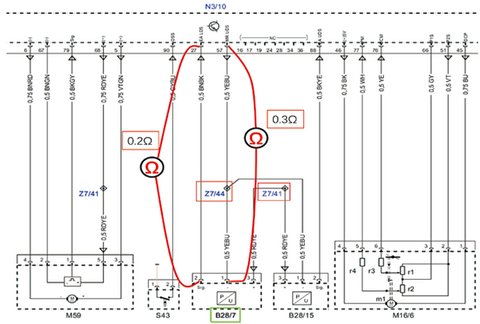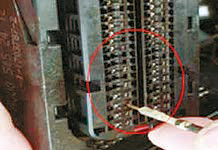[Repair Case] Mercedes-Benz E260 engine fault light is on
Posted by Tony Brown on
Model: Equipped with M271EVO engine.
VIN: LE42121471L××××××.
Issue: The customer reported that the engine fault light was constantly on, and after which, the engine was sometimes weak.
Diagnosis: Inspect the vehicle after getting it according to the customer's description. The technician started the engine and discovered that the engine warning light on the instrument was always on; the operating condition was checked while the engine was idling, and no visible abnormalities were discovered. Confirm the failure that the customer has reported. The technician then connected to a Mercedes-Benz special diagnostic equipment to read the relevant fault code, which revealed that the engine control unit had a fault code: P010664 intake manifold pressure sensor was faulty, there was an unreliable signal, and the present fault.
When the technician saw this error code, he immediately thought of a technical bulletin for the Mercedes-Benz 212 model. The technician looked up the technical bulletin from the manufacturer: There could be a transition resistance in the engine wiring harness causing the intake manifold pressure sensor to malfunction. The technician then performed the following inspections in line with this manual: ①Check the engine compartment wiring harness for signs of friction, and repair if necessary. After careful inspection, no traces of friction were found on the engine compartment wiring harness. ②Check the ground connection of the engine control unit, clean/repair if necessary. The technician processed the ground wire of the engine control unit. ③Disconnect the Z-shaped bushing connector (Z7/41, Z7/44, as shown in Figure 2) in the wiring harness, repair it with a welded connector, and insert an extension piece with a welded connector if necessary. The technician re-welded the Z7/41 and Z7/44 wiring harness nodes according to his instructions.
 Figure 2
Figure 2
The customer's car was withdrawn from the plant after the technician completed all of the points in accordance with the manufacturer's technical bulletin's recommendations. The customer, however, called the next day to report that the fault light had come back on. Return to the store and report the following fault code: The intake manifold pressure sensor (P010664) is defective. There is an unreliable signal. This failure is a regular issue with this model's engine. Previously, such flaws were fixed in this manner, with no rework required. Is there anything else you'd like to add? There is no other option than to start at the beginning and rearrange the thinking. Find the circuit diagram of the intake pressure sensor B28/7 and analyze the possible causes of failure: ① The intake manifold pressure sensor is faulty; ② The wiring harness between the intake manifold pressure sensor and the engine control unit is short-circuited or open; ③ The engine control unit is plugged in The needle contact is poor; ④ The internal fault of the engine control unit.
According to the possible reasons analyzed by the technician, combine the circuit diagram (as shown in Figure 3) to measure: ① Check whether the wire between the engine control unit and the intake pressure sensor is short-circuited or open, and measure the No. 27 pin of the M plug of the engine control unit And the No. 2 pin of sensor B28/7, the resistance value is 0.2Ω, the resistance to ground is infinite, the voltage to ground is 0, and the circuit is normal. In the same way, measure the No. 57 pin of the M plug of the engine control unit and the No. 1 pin of the sensor B28/7, the resistance value is 0.3Ω, the ground resistance is infinite, the ground voltage is 0, and the circuit is normal. ② Check the intake pressure sensor B28/7, there is no damage or deformation, the installation position is correct, and no abnormality is found. ③ Check the pin of the air inlet pressure sensor B28/7 corresponding to the harness plug. No corrosion is found. Use the standard pin and check that the internal pin clamping resistance is obvious. ④ Check the No. 27 pin of the M connector of the engine control unit, and no corrosion was found. Then the technician used the standard pin to check the clamping resistance of the internal pin and found that it was very loose. So far, the problem has been found. Due to the loose inside pin 27 of the engine control unit M connector (as shown in Figure 4), the contact is poor, causing the intake pressure sensor B28/7 to send an error signal, causing the engine failure light to turn on, and the engine sometimes powers insufficient.

Troubleshooting: Replace the No. 27 pin of the engine control unit's M plug, reassemble the remaining parts, clear the fault code, and drive a long distance. The problem does not reappear. After a month, I called back, and the feedback revealed that no earlier failures had occurred. The failure has been eliminated thus far.
Summary: It can be observed from this example that we can sometimes repair the vehicle fast based on the model/engine’s "common problem". But, as in this example, it doesn't always work. This necessitates that we expand our knowledge, skills, and diagnostic thinking. In this way, even if the "common problem" method isn't employed on a regular basis, troubleshooting the car will be confident and simple.
